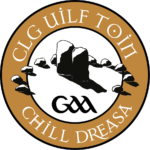On a day of big events in London, it’s appropriate to revisit an inauguration ceremony much closer to home, that of The Ó’Néill at Tullyhogue Fort.
For several centuries each successive Ó’Néill was inaugurated there (not ‘crowned’, as no crown ever featured), using ‘Leac na Rí’, a stone chair that sat on the hillside outside the Fort. ‘Ó’Néill’ was then seen more as a title or status than a surname.
The incoming Ó’Néill would vow to rule by Brehon Law and to step aside when too old or frail. He accepted a straight white, peeled sally rod (the ‘rod of lordship’ | slat tigiornais) to signify his rule would be neither forced nor corrupt. As he sat in Leac na Rí a golden shoe was thrown over his head by his principal sub-chief, O’Cahan, to signify good luck and his continuation in the footsteps of his ancestral title-holders.
The chief of the O’Hagans (the hereditary reachtaire or guardian/steward to the Ó’Néills, who lived in the Fort and who read the law at the inauguration) then placed the shoe on The Ó’Néill’s foot, and the Bell of St Patrick was rung.
Hugh ‘The Great’ Ó’Néill (whose image features in our Gortacladdy Hub timeline) was, in September 1595, the last to be so ‘created’ at Tullyhogue.
Six years later Gaelic Ireland lost the Battle of Kinsale to English forces led by Lord Mountjoy who quickly imposed a new order: “In the year 1602, the Lord Deputy Mountjoy remained here at Tulloghoge for five days, and brake down the chair wherein the O’Neills were wont to be created, being of stone planted in the open field” (Fynes Moryson).
Folk history has it that the surviving bits of the broken Leac na Ri form the keystone in the arch over the doorway in the porch of nearby Desertcreat Church of Ireland Parish Church. Hugh O’Neill left Tyrone in The Flight of the Earls in September 1607 and died and is buried in Rome.



